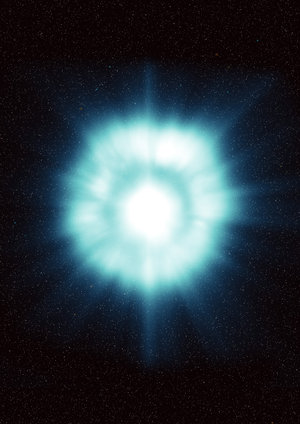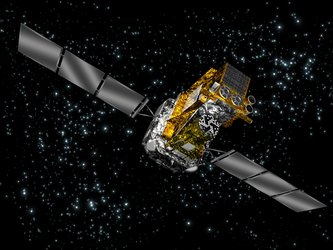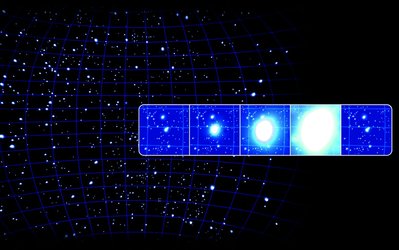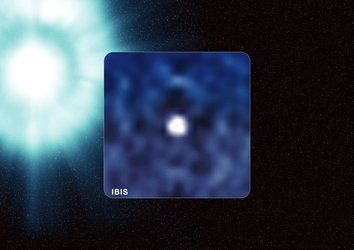

Gamma-ray burst strikes Earth from distant exploding star
The artistic impression depicts the effect of a powerful blast of gamma rays that provoked a significant disturbance in our planet’s ionosphere. This is the result of a gamma-ray burst (GRB) from a star’s supernova explosion, in a galaxy almost two billion light-years away.
The event took place at 14:21 BST / 15:21 CEST on 9 October 2022 and was detected by many of the high-energy satellites in orbit close to Earth, including ESA’s Integral mission – shown on the left of the illustration. Instruments in Germany picked up signs that the Earth’s ionosphere was disturbed for several hours by the blast.
The ionosphere is the layer of Earth’s upper atmosphere that contains electrically charged gases called plasma. It stretches from around 50 km to 950 km in altitude. To better understand the effects that a GRB can have on the top layer of this tenuous shell of plasma, scientists decided to analyse the data gathered by China Seismo-Electromagnetic Satellite (CSES) – depicted here on the right. This is a Chinese-Italian space mission, launched in 2018, which monitors the top side of the ionosphere for changes in its electromagnetic behaviour.
CSES picked up a clear sign of disturbance in the top layer of the ionosphere, in the form of a strong electric field variation. This is the first time that such signal is registerd following a GRB. In the past, GRBs have been observed affecting the bottom-side ionosphere during the night, when solar influence is removed, but never in the top side.
This new result reinforces the idea that a supernova in our own galaxy might have much more serious consequences. In the worst case, the burst would not only affect the ionosphere, but it could also damage the ozone layer, allowing dangerous ultraviolet radiation from the Sun to reach the Earth’s surface. Such an effect has been speculated to be a possible cause of some of the mass extinction events known to have taken place on Earth in the past.
[Image description: An image of Earth from above fills the lower right part of the figure. It’s a spherical bluish surface mostly covered in white clouds – there’s a thin layer of light blue and dark magenta around Earth’s surface. A gold-colour satellite hovers in the dark-blue sky above, on the right side, this is the China Seismo-Electromagnetic Satellite. It has the shape of a cubic box with six long antennas sticking out. A blueish-magenta beam enters diagonally from the top-left of the image and strikes the top magenta hazy layer around the Earth, resulting in an intense and brighter magenta-coloured diffuse cloud around the white strike point. This illustrates the energy of the gamma-ray burst hitting Earth’s ionosphere. In the top-left part of the figure the magenta beam intersects a depiction of ESA’s Integral spacecraft, which has the shape of a shoebox, mostly gold in colour with the rectangular wings of the solar-panels sticking out on either side.]





